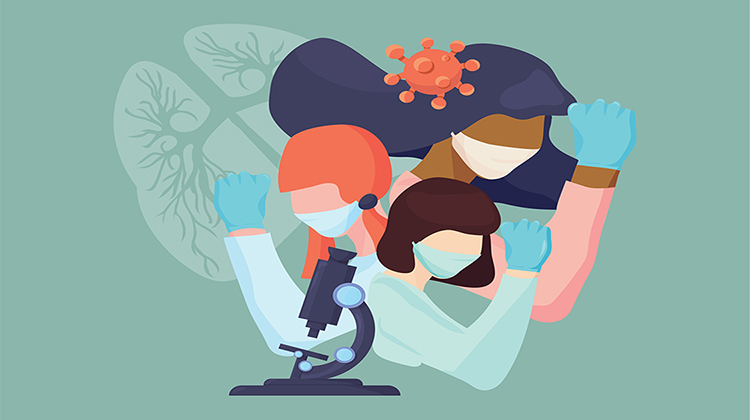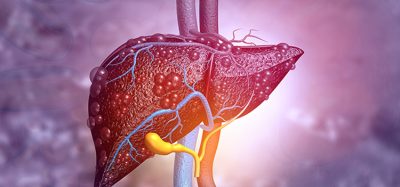Women in Stem with Danielle Meyrick
Posted: 17 June 2024 | Dr Danielle Meyrick (ITM) | No comments yet
Dr Danielle Meyrick holds a PhD in Physical Chemistry and Radiopharmaceutical Chemistry, and a Doctor of Medicine. Her early career was shaped by various scientific and medical residences at hospitals in the US and Australia. With over 20 years of experience, she is now Chief Medical Officer of ITM and is responsible for providing clinical leadership to ITM’s radiopharmaceutical development platform.


Can you tell us about your journey in the field of STEM and the challenges you encountered along the way?
I didn’t apply a lot of thought to my early career choices in STEM; my inquisitive nature drew me to the physical sciences, and I have always felt very comfortable among scientists and in the global scientific community. There is a sense of a meeting of the minds, and a pursuit of causes that affect us all. Science has become my default (but not only!) lens through which I look at and understand the world. My curiosity extends beyond the physical sciences and into the life sciences and this led me to study and practice clinical medicine. This was one of the most personally challenging but purposeful and rewarding periods of my career, and despite the many physical, mental and emotional challenges, I reflect on it with great gratitude. I am now incredibly privileged to work at the nexus of science and medicine in radiopharmaceutical drug development, and use my built-in scientific lens every day.
What inspired you to pursue a career in STEM, and how did you overcome any obstacles or biases you may have faced?
My innate curiosity inspired me to pursue a career in STEM. This curiosity was always supported by my mother, who encouraged me to read about science and to visit scientific museums when I was very young. When I was at school, I was inspired to study physical sciences partly because they were considered the most challenging subjects. As I entered university, I found inspiration from a variety of sources and people, including artists, writers, and athletes in addition to scientists. The common element in all sources of inspiration is consistency, persistence and a sense of purpose. I remember reading a biography of the Nobel Prize-winning chemist Dorothy Hodgkin and her 30-plus year endeavour to elucidate the structure of insulin. Stories like these highlight the role that perseverance plays in achieving a goal.
The biases I have faced as a woman in STEM became more apparent to me as my career progressed. I don’t believe my gender has meant I have had fewer opportunities, but I have certainly faced many of the challenges other women in STEM and other careers face daily, and relate to assumptions about my level of understanding of technical matters and being adequately heard. I have, throughout my career, very frequently been the only woman in a room and while I am often not acutely aware of this, it has at times had the effect of drowning out my voice in many settings. I haven’t been able to think of any strategy to overcome any gender-related challenge other than to keep turning up, be consistent, persist and focus on forward momentum. I can gladly say that I have noticed a shift in attitude towards women in STEM in recent years, and I feel the biases less. But that may simply be a function of the colleagues I’ve been fortunate to have.
Could you share an example of a specific project or research that you have worked on and the impact it has had in your field?
I was very pleased to be heavily involved with one of the very first radiopharmaceutical therapy programs for patients with neuroendocrine tumours (NETs) nearly two decades ago. This therapy is now widely used, but preparing radioactive chemicals to inject into patients many years ago when I was a fresh PhD candidate felt like a very big step. The clinicians I worked with were pushing boundaries, and I was fortunate to be involved as I learned to adopt that boundary-pushing courageous attitude. In the case of that therapeutic program, we were able to offer hope to many patients who had no other available options, and we raised the profile and progressed the field of radiopharmaceutical therapy in the southern hemisphere, formed strong work relationships with international colleagues, and this foundation has had a lot to do with bringing me to where I am in my career today.
How has your research in STEM contributed to advancements or improvements in your field, and what potential future applications or implications do you foresee based on your work?
My work in STEM has always been driven by my desire to help improve patient outcomes. I have contributed to this goal by advancing theranostic (therapeutic and diagnostic) radiopharmaceutical drug candidates from bench to bedside. The radiopharmaceutical field holds great promise for improving the outcomes for patients living with various hard-to-treat cancers. By linking therapeutic medical radioisotopes to targeting molecules, we can identify and destroy tumour cells in a highly precise and effective manner. This impact has already been demonstrated in the widely-used radiopharmaceuticals and warrants further exploration to reach a broad patient population and a diverse range of cancer indications. That is what I am focused on in my current position as Chief Medical Officer at ITM, where I am leading the pipeline development of a core leader in the space.
As a woman in STEM, what unique perspectives or strengths do you believe you bring to your work?
I think women have, in general, a more action-oriented approach, and bring clarity of purpose to the table. I have also found women more willing to address some of the challenges associated with team dynamics, and give deliberate attention to setting and sustaining a workplace culture that fosters collaboration, cooperation, inclusivity and, ultimately, happiness. A happy team is a productive team!
What advice would you give to young women who are considering a career in STEM but may be hesitant due to societal stereotypes or perceived challenges?
Follow your path with courage, determination and persistence. There are challenges in every career, and if you follow a path that inspires you, you will find the energy and the resilience to overcome those challenges to ultimately achieve your goal. It is even more difficult to overcome obstacles if your heart and mind are not fully engaged in your pursuit. I also suggest look to others who have succeeded before you, and ask yourself (if not them) what they did to succeed. Remember that success doesn’t happen in an instant: it is important to know what you want before you can figure out how to get there, and looking to others who have succeeded helps to understand where our own gaps are, and how we need to fill those gaps. Having said those things – focus less on where you are going, and more on where you are. Eventually you will look up and realise you have gained great experience and expertise and made great strides in your career.
In general, I would advise any young person starting out in their career to:
- Build a mutually supportive network.
- Say yes to every opportunity – at all stages of your career. You never know who you may inspire, who you may help, and who may meet and remember you.
- Expose yourself to uncomfortable situations. The more you do this, the less uncomfortable you will feel.
How do you see the representation of women in STEM changing over the years, and what further progress do you believe is needed?
Women remain underrepresented. Although there is, I believe, roughly equal representation at the university level, this doesn’t translate to the workforce. Women’s contribution to STEM is increasingly recognised and accepted, but girls and women need to look towards role models – “if you can see her, you can be her.” If the proportion of women in STEM career roles is comparatively small, it makes it challenging for girls to find role models.
And women themselves need to work on our internal biases. I still correct myself daily on some of my gender-biases! We all have room to improve.
In your opinion, what can organisations and institutions do to create a more inclusive and supportive environment for women pursuing STEM careers?
I think some of the initiatives are quite simple. Women may need encouragement to participate in discussions and decision-making – their exposure to the inherent societal gender-biases may mean they lack confidence early in their STEM careers (they may not feel they belong). Inviting women to participate and deliberately creating a workplace culture that encourages contribution of women is not hard to do. It often requires others to give something up to correct the imbalance, but ultimately society as a whole will benefit.
Looking ahead, what exciting developments or advancements do you foresee in your field of STEM, and how do you envision your own research contributing to those future innovations?
The radiopharmaceutical field holds great promise for improving care, extending lives and improving the quality of life for patients living with cancer. This approach is developing rapidly and gaining traction across the larger biotech community across areas including diagnostics, therapeutics, stand-alone and combination therapies. The opportunities are truly enormous. Now, we need to focus on improving our offering of these valuable therapies to reach the most patients possible and to address a broad range of hard-to-treat cancer indications. I am excited that I have this opportunity in my new position at ITM, advancing a diverse range of theranostics bringing together the right radioisotopes and targeting molecules.
About the author
Dr Danielle Meyrick, Chief Medical Officer of ITM


Dr Meyrick brings more than 20 years of medical research, radiotheranostic drug development and management experience to ITM. She has held senior leadership roles across international biotech and radiopharmaceutical organisations including GenesisCare, AdvanCell Isotopes and Telix Pharmaceuticals.
Dr Meyrick’s early career was shaped by various scientific and medical residences at hospitals in the US and Australia, including at the Department of Nuclear Medicine at Fremantle Hospital in Western Australia. She holds a PhD in Physical Chemistry and Radiopharmaceutical Chemistry from Murdoch University, and a Doctor of Medicine, awarded by the University of Western Australia. Dr Meyrick has been published in more than 60 scientific journals and conference papers.
Related topics
Oncology, Therapeutics
Related conditions
Cancer
Related organisations
ITM
Related people
Dr Danielle Meyrick (ITM)







